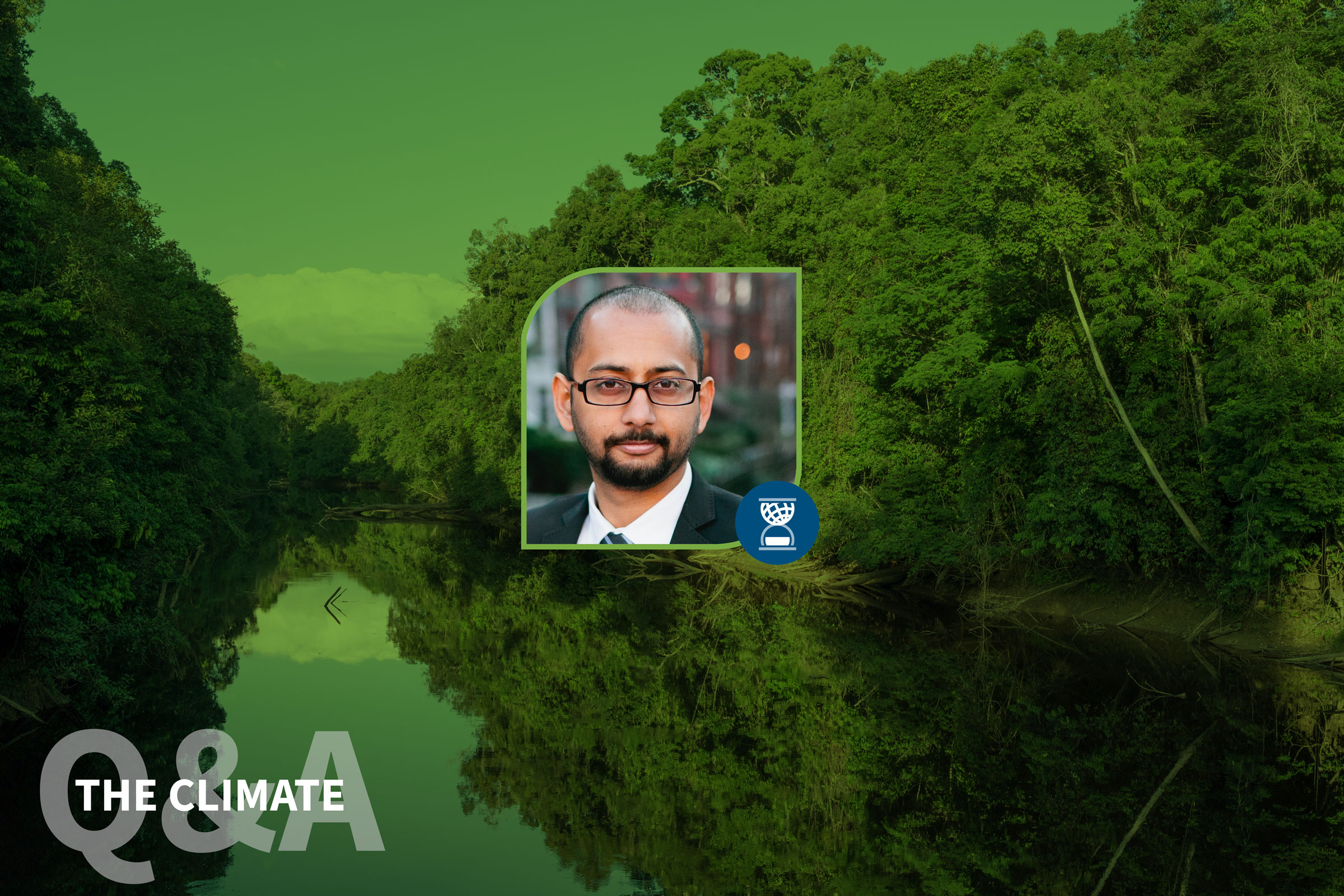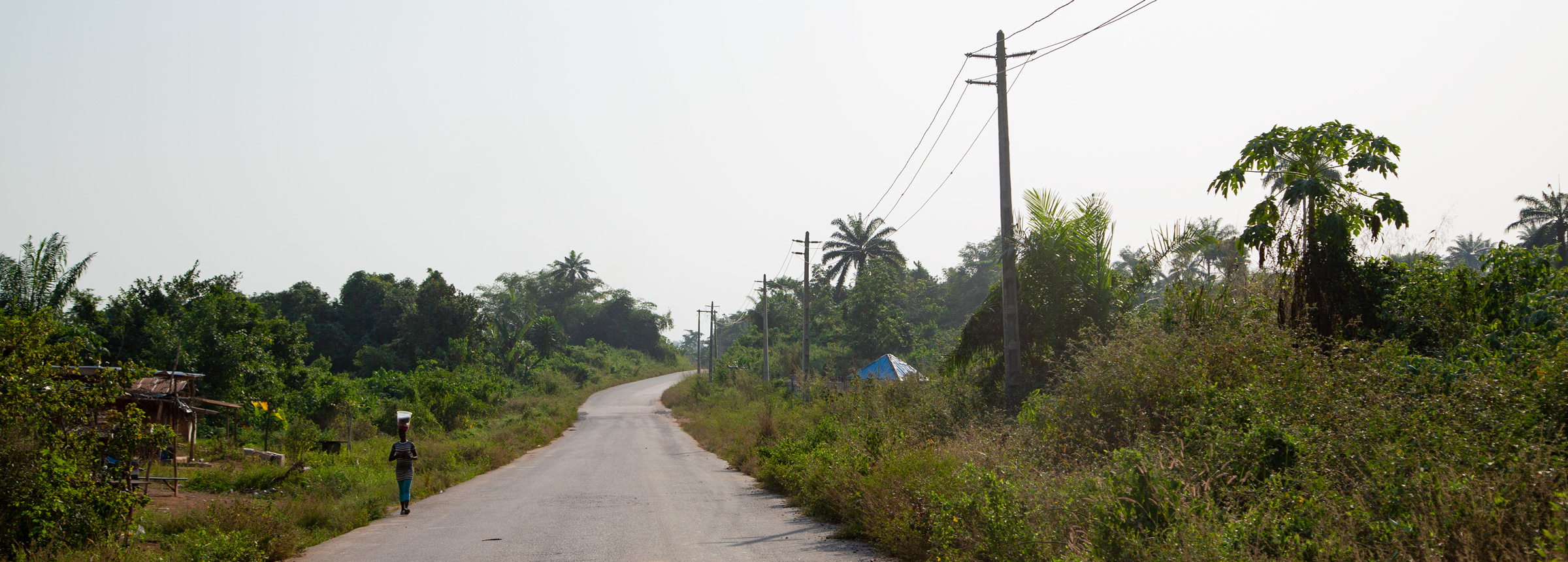
The Climate Q&A…
with Winrock Director of Sustainable Finance Anmol Vanamali
Anmol Vanamali works with teams across Winrock to design and implement innovative financing solutions through partnerships with financial institutions and the private sector. Expanding climate finance is a major theme of this year’s COP27 in Egypt, called the “Climate Implementation Summit.” We caught up with Anmol just before the climate conference in Sharm El-Sheikh to get some of his thoughts.
You’ve mentioned the need to identify and plug climate finance gaps. Just how big are those gaps, and how can Winrock, our partners and others help to fill them?
In simple terms a climate finance gap refers to the difference between what we need to invest to meet climate goals compared to what we are currently investing. Less simple is to actually measure the amount needed, because estimates vary depending on climate scenarios, time horizon, which sector (agriculture, energy, forestry, etc.) you focus on, and the quality of data. Generally speaking, no matter which sector or how you measure it, though, the gap is tremendous. For instance, according to the Climate Policy Initiative the total amount of climate finance over 2019-2020 was around $632 billion. The CPI averages two years of data to smooth fluctuations. They estimate that climate financing must increase by at least 590%, or $4.35 trillion annually, by 2030 to limit global warming to 1.5 degrees.
The really complex part, of course, is closing the gap. This requires a concerted effort across the entire value chain of climate finance ─ from the eventual recipient to the financier and everyone in between. Winrock is in the middle of that climate finance value chain and like many of our peers, we act in several ways to help bridge gaps. We take an approach that is similar to how we mobilize all sustainable finance, generally, through our work with private, public and nonprofit partners. We use what is called the CoFEI framework – pronounced like “coffee” ─ which is appropriate because it can help fuel more finance and keep it flowing. CoFEI stands for:
- Coordinate: Using information and relationships to bring supply and demand sides of sustainable finance closer.
- Facilitate: Using technical assistance to remove pain or friction points for sustainable finance transactions.
- Enhance: Using technical assistance or implementing financial mechanisms to enhance value creation and reduce risks for sustainable finance transactions.
- Invest: Using capital or implementing financial mechanisms to fill gaps in the sustainable finance landscape.
So part of our gap-filling approach involves ensuring that each of those CoFEI dynamics, or elements, is considered, addressed and synchronized in a way that makes the most sense for the project, the partners and the financing goal. Winrock is in a good position to do that since as I noted already, we’re in the middle of that finance value chain ─ we can see down both sides.
Does Winrock use different approaches for supporting private sector climate finance flows, such as investments by companies and industries, vs. public sector flows ─ i.e., climate spending or investments by governments?
As the role of the private sector has been elevated in international development programing, Winrock too has increased its private sector engagement significantly in the past few years, both within the auspices of a donor-funded program or directly in collaboration with the private sector.
Clearly when it comes to governments, they have a much wider variety of concerns related to climate change than the typical private sector organization. This means that Winrock’s engagement with the public sector ranges from mainstream finance activities (e.g., working with national development banks to increase their capacity) to activities that have very little to do with the financial sector but still require public spending (e.g., dealing with potential climate migration). Especially in the context of lesser developed countries or new technologies, there are some fundamental building blocks related to the enabling environment such as public infrastructure, supporting policies and regulations, and clear legal frameworks. Those have to be in place before expecting the private sector to play its part.
For instance, in countries and sectors where the building blocks are already in place, Winrock’s approach is less focused on the government and more on directly working with the private sector. As an example of a donor-funded program focused on supporting private sector climate finance, Winrock plays a facilitative role under the SUNREF project in Nigeria, where through technical assistance and due diligence we support easier access to affordable loans from two local commercial banks for innovative clean energy conversion or expansion projects. (Click here to read more about SUNREF’s first facilitated loans in Nigeria.)
As far as direct collaborations with the private sector are concerned, these have tremendous potential due to the net zero movement and general drive to improve corporate and industrial Environmental, Social and Governance performance. For example, Winrock has supported leading corporations such as Nestlé, Microsoft, and McCormick with their net zero efforts and recently established Net Zero Climate Services to scale up this crucial work.
What is the role of innovation in bridging the climate finance gap, and how is Winrock contributing?
As new low-carbon and/or climate resilient technologies, business models and market mechanisms are developed and are inadequately served by existing capital markets and financial institutions, we need financial innovation to come up with products and modalities that allow for finance to flow at the rate required for these to meet their true potential. However, financial innovations will only help mobilize climate finance at the levels needed to bridge the aforementioned gap if the resulting transactions are profitable, predictable, scalable, and replicable – four principles that are fundamental for motivating capital markets and financial institutions to participate wholesomely and inducing long-term structural shifts in capital allocation.
There is also room for niche financial innovation if it serves the purposes of delivering systems change such that in the medium-to-long term, such a financial innovation is by itself unnecessary.
As an example, Winrock was one of the winners of the Adaptation Innovation Challenge sponsored by the Global Environment Facility in 2021 for an initiative called the Net-Zero Adaptation Finance program. The idea for NZAF was born when we realized that there is a disconnect between the two buckets of climate change activities, mitigation and adaptation, related to the land-use sector, especially as it relates to agricultural supply chains. On one hand we are relying on the Agriculture, Forestry and Other Land Use sector as a major carbon reduction and removal pathway to meet our mitigation goals. On the other hand there is a massive finance gap related to adaptation and resilience in the sector to climate variability and climate change.
NZAF proposes to break down the silos of mitigation and adaptation as they pertain to the AFOLU sector in two ways. The first method is by promoting advanced climate risk management through the use of a screening tool for land-based climate mitigation projects. That includes projects that produce carbon credits and interventions that reduce carbon in agriculture commodity supply chains. The second method is by providing concessional financing to project developers whose projects receive a positive screening score to incentivize mainstreaming of climate resilience in carbon projects.
If NZAF gets it right, then carbon project developers and procurers would have internalized the value of resilience into their business processes, and we can move on to solving other challenges in our fight against climate change.
Related Projects

